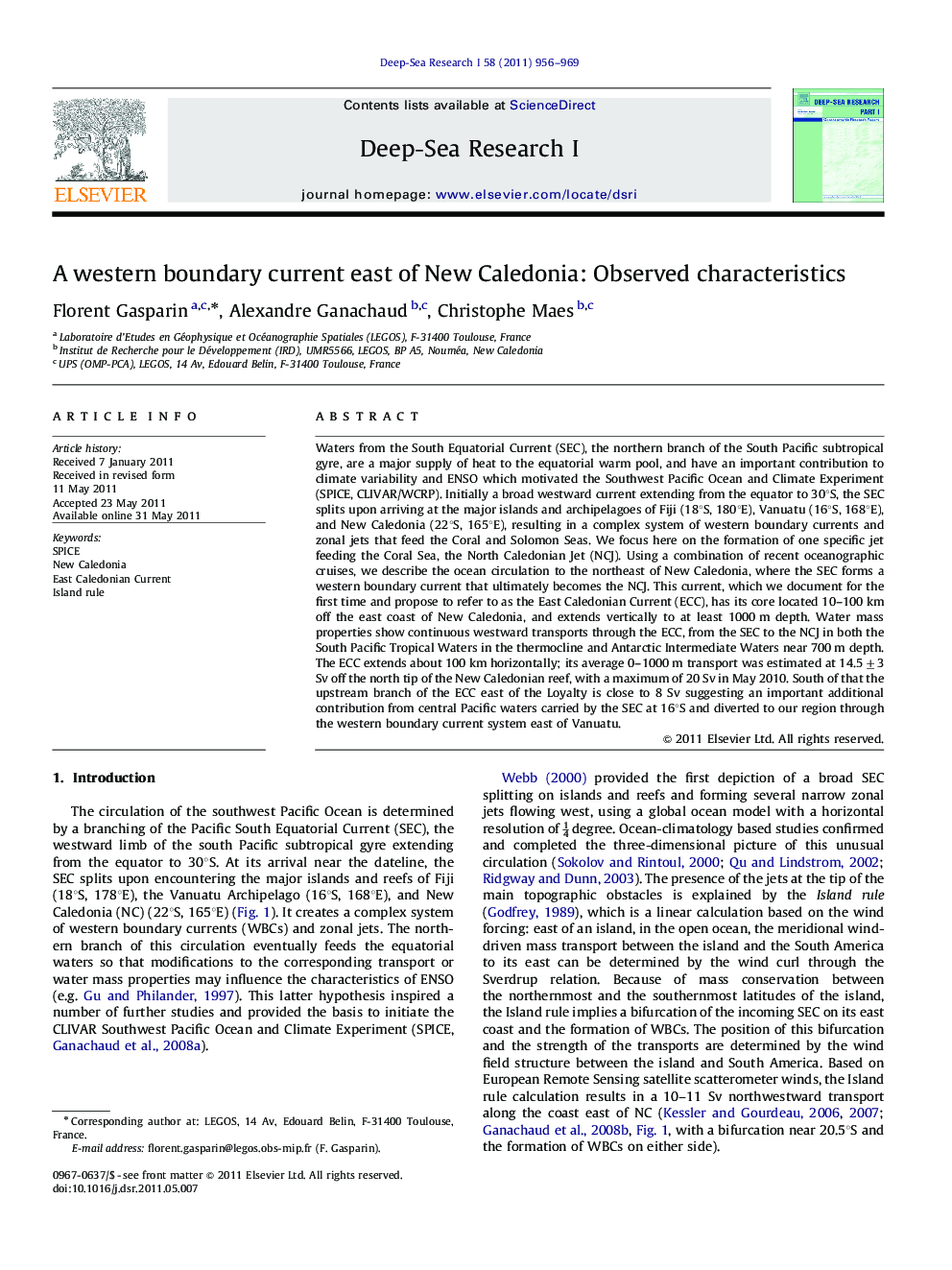| کد مقاله | کد نشریه | سال انتشار | مقاله انگلیسی | نسخه تمام متن |
|---|---|---|---|---|
| 4534920 | 1326070 | 2011 | 14 صفحه PDF | دانلود رایگان |

Waters from the South Equatorial Current (SEC), the northern branch of the South Pacific subtropical gyre, are a major supply of heat to the equatorial warm pool, and have an important contribution to climate variability and ENSO which motivated the Southwest Pacific Ocean and Climate Experiment (SPICE, CLIVAR/WCRP). Initially a broad westward current extending from the equator to 30°S, the SEC splits upon arriving at the major islands and archipelagoes of Fiji (18°S, 180°E), Vanuatu (16°S, 168°E), and New Caledonia (22°S, 165°E), resulting in a complex system of western boundary currents and zonal jets that feed the Coral and Solomon Seas. We focus here on the formation of one specific jet feeding the Coral Sea, the North Caledonian Jet (NCJ). Using a combination of recent oceanographic cruises, we describe the ocean circulation to the northeast of New Caledonia, where the SEC forms a western boundary current that ultimately becomes the NCJ. This current, which we document for the first time and propose to refer to as the East Caledonian Current (ECC), has its core located 10–100 km off the east coast of New Caledonia, and extends vertically to at least 1000 m depth. Water mass properties show continuous westward transports through the ECC, from the SEC to the NCJ in both the South Pacific Tropical Waters in the thermocline and Antarctic Intermediate Waters near 700 m depth. The ECC extends about 100 km horizontally; its average 0–1000 m transport was estimated at 14.5±3 Sv off the north tip of the New Caledonian reef, with a maximum of 20 Sv in May 2010. South of that the upstream branch of the ECC east of the Loyalty is close to 8 Sv suggesting an important additional contribution from central Pacific waters carried by the SEC at 16°S and diverted to our region through the western boundary current system east of Vanuatu.
► We analyse the characteristics of a boundary current that forms against the east coast of New Caledonia based on eight hydrographic cruises.
► We find during each cruise a marked northwestward current within 150 km of the coast, that we call the East Caledonian Current.
► The East Caledonian Current transports 8–20 Sv, and has a clear signature in water properties. It provides the main supply to the North Caledonian Jet that feeds the Coral Sea from the west.
Journal: Deep Sea Research Part I: Oceanographic Research Papers - Volume 58, Issue 9, September 2011, Pages 956–969